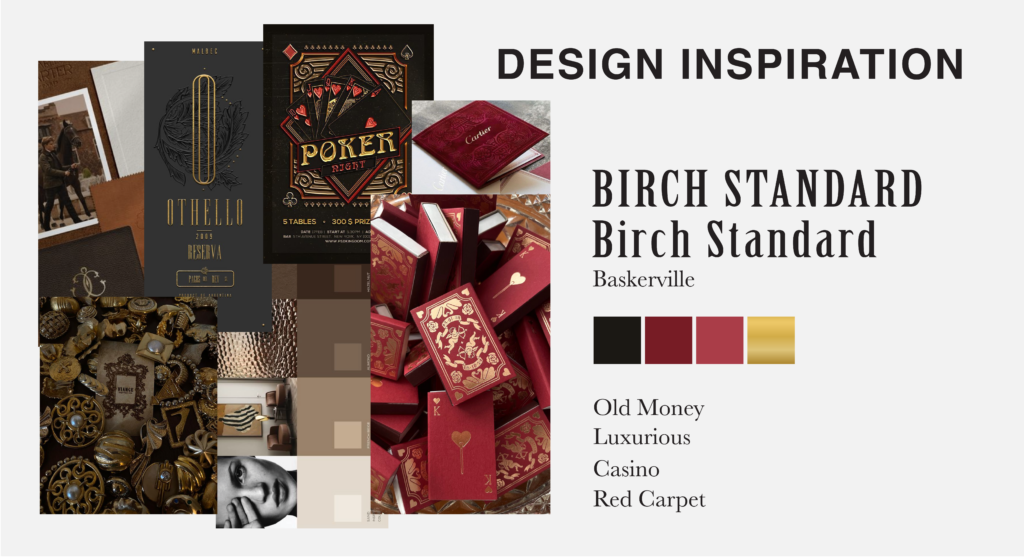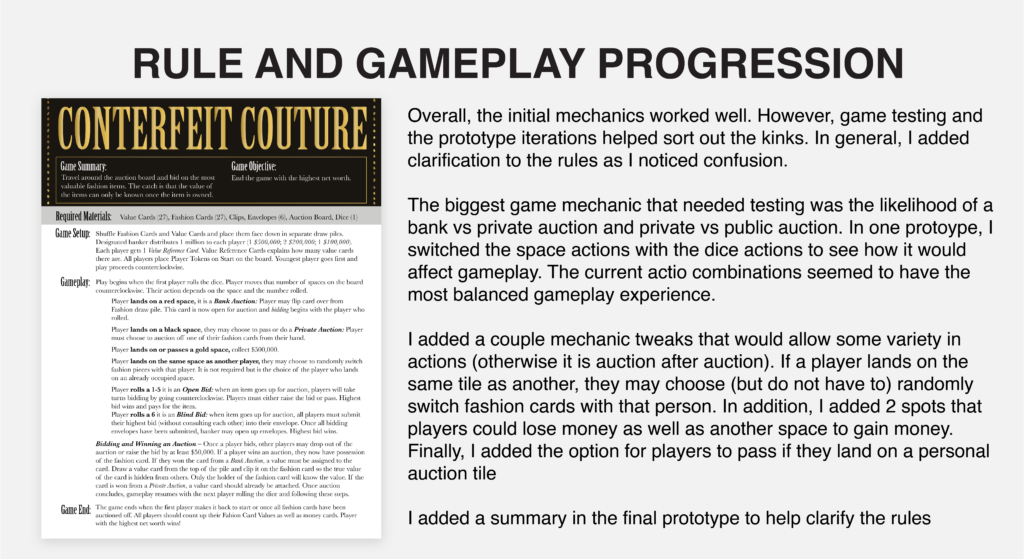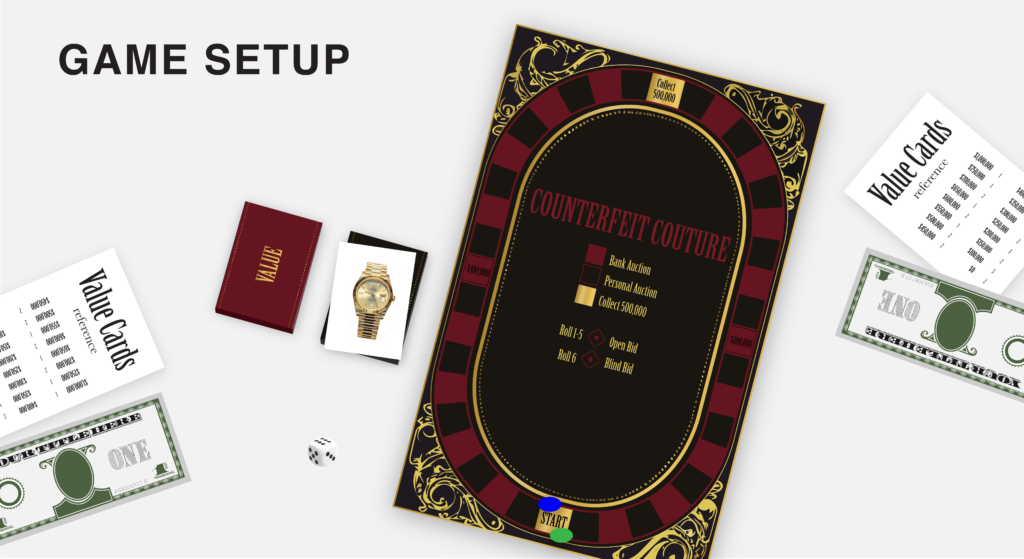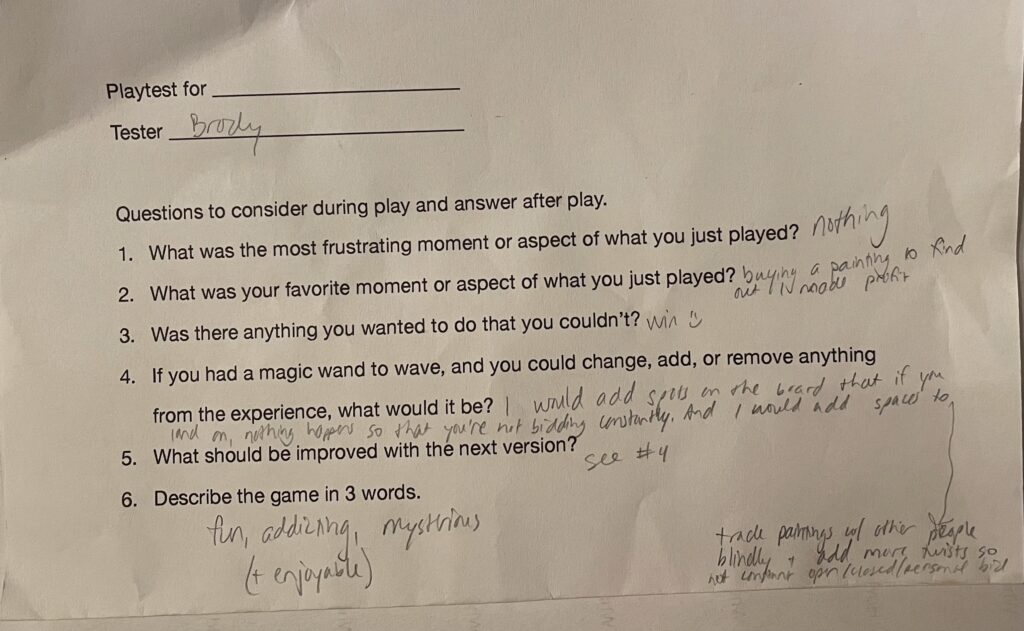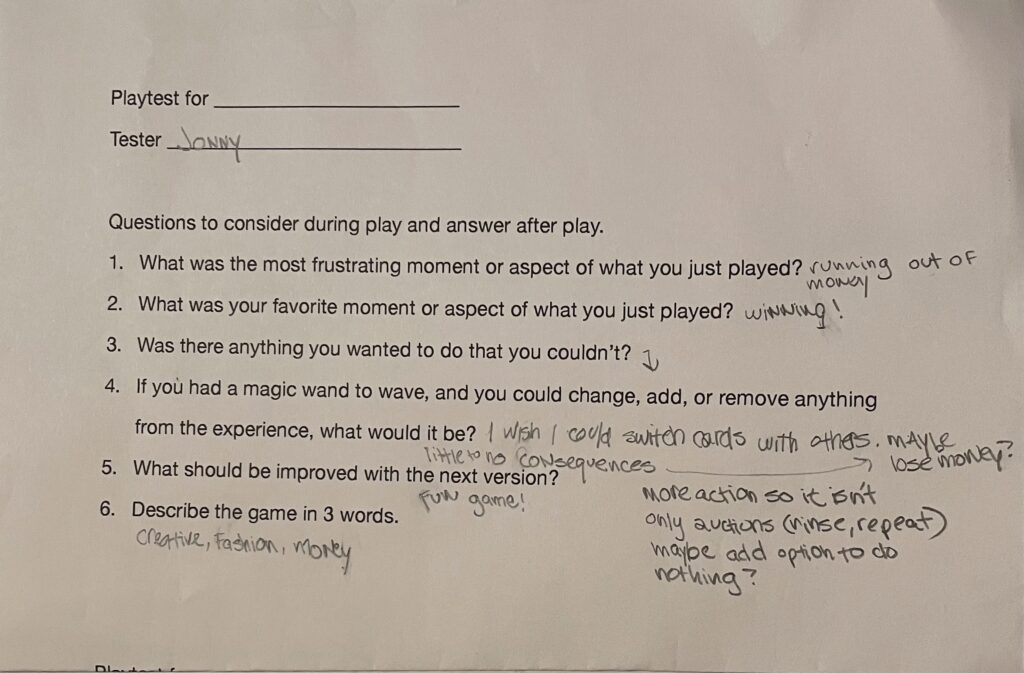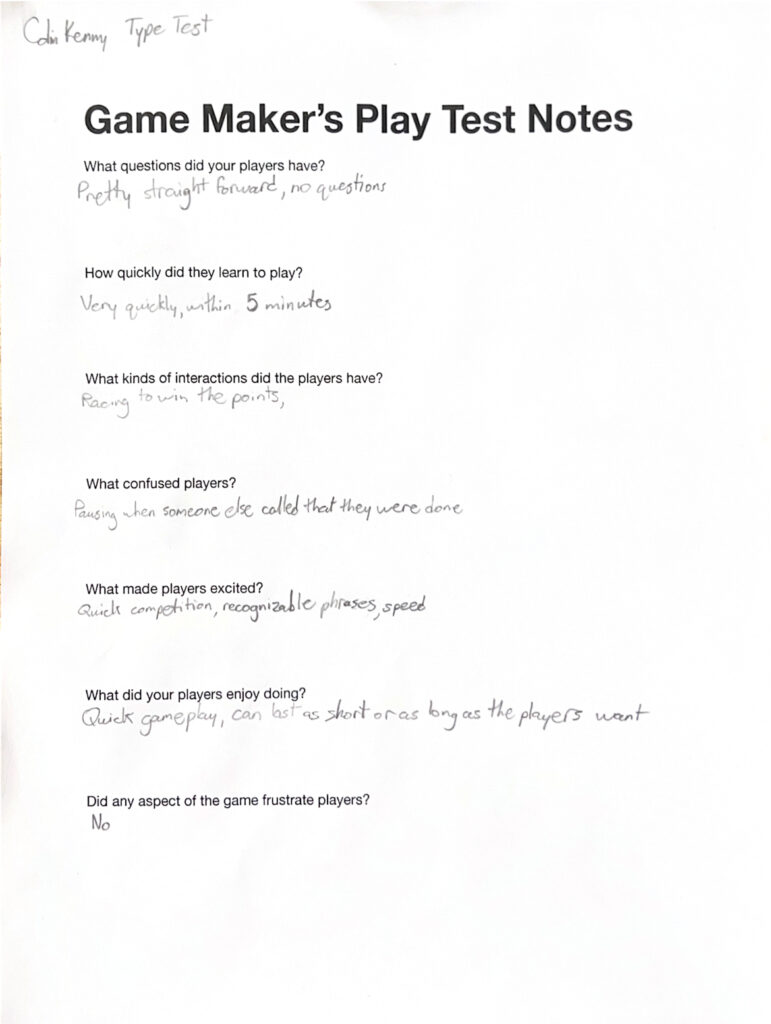https://docs.google.com/presentation/d/1b80kNHMXQ3wMOaIlFgHbB-HyKPNc-PaouqvBy9Qa8pk/edit?usp=sharing
WEEK 6
Concept and Rule Set: Anansi the trickster
PROTOTYPE 1
• Theme: Inspired by Anansi, the trickster spider, with gameplay focused on outwitting opponents.
• Objective: Be the first player to discard all cards while using abilities and trick cards to sabotage others.
• Deck Composition:
• Number Cards: 30 cards across 3 suits (Trick, Trap, Action), numbered 1-10.
• Trick Cards: 40 cards with various actions (e.g., stealing cards, reversing turns, forcing draws).
• Wild Cards: 10 cards to match any suit or number.
• Character Cards: 10 unique trickster characters, each with special abilities.
• Turn Structure:
1. Play a card to match the top card on the discard pile by suit or number.
2. Play a Trick Card or Wild Card at any time.
3. Use character abilities at any time during a turn.
4. Draw a card if no playable options exist.
• Winning: First player to discard all cards wins.
Final question set
- Question Set 1
- What is the difference between a “working” and a “display” prototype? A working prototype is for playtesting mechanics and planning iterations whereas a display prototype is for presentation and concept demonstration.
- What is required of a working prototype, and what might cause one to fail? Working prototypes are intended to receive feedback so it must have the central mechanics that make it playable. To be playable, the rules should be as clear as possible with defined goals and actions. A prototype could fail if it hasn’t been tested enough, has unclear rules, or has mechanics that are not fully interactive.
- What makes for a good prototype according to Dale Yu? According to Dale Yu, a good prototype should have a clear purpose and focus on key mechanics. It should not overwhelm players with complex designs, rules, or mechanics but start off with simplicity.
- What advice from Richard Levy will help you pitch your game? Before the pitch, one must know the audience. He also suggests starting by focusing on the core idea when pitching. Overall, aim for clarity and simplicity while also being prepared to answer challenging questions.
- Where might you pitch your game? Conferences, kickstarters, investors, game accelerators, publishers, studios, developers, and more.
- What do publishers look for in a game? Publishers look for a unique and engaging idea they have not seen before. They also keep in mind factors such as marketability, playability, scalability, and game maker reliability.
- What makes a good set of Rules? Rules are the first impression of a game so they are evidently very important. It should use terminology that is consistent. It should anticipate rare scenarios while also supporting the core experience. Overall, they should be simplified as much as possible.
Question Set 2
- Describe the best game you’ve made this semester in 200 words? Follow Michelle Nephew’s outline.
Counterfeit Couture is a competitive game about buying and selling fashion items of hidden value at high-stake auctions. The goal of the game is to end with the highest net value as you win expensive pieces and sell off less valuable pieces. From bluffing to bidding, invest in your fashion collection and watch your net worth grow! The game is intended for ages 8+, with 3-6 players, and a game experience of about 45-90 minutes.
Final Documentation for Counterfeit Couture
Play Test for Counterfeit Couture – prototype 2
Questions from Book
- Question Set 1
- What is the difference between a “working” and a “display” prototype? A working prototype is “…intended for evaluation by playtesters and potential publishers” and display prototypes have “… finished art and components, intended for the eyes of distributors or chain buyers” (p. 108). Display prototypes are solely focused on aesthetics and may not even have finished rules.
- What is required of a working prototype, and what might cause one to fail? A working prototype must include everything needed to play the game, not include anything that hasn’t been thoroughly tested, be solely about the gameplay, playable, legible, and user-friendly. In general, if you don’t follow these rules, your working prototype may fail.
- What makes for a good prototype according to Dale Yu? You should try to make a good first impression, with a clean and nice design (doesn’t need to be totally finalized, obviously). Everything needed to play the game should be there and organized neatly.
- What advice from Richard Levy will help you pitch your game? Pitch yourself first before you pitch your game, come prepared and do your homework, get to know the company you’re pitching your game to, don’t let rejection deter you, don’t have a too big or too small ego, recognize the chances are very low but not impossible, know the selling seasons, submit multiple submissions, be careful with agents and marketing companies, have a good prototype and branding
- Where might you pitch your game? Mass market game publishers such as Hasbro, speciality game publishers, etc.
- What do publishers look for in a game? According to Michelle Nephew, publishers are looking for a fun game, minimized set up time and rules, strategy, an interesting theme, an immersive experience, themes and rules relate, good rules and mechanics, inventive rules and components, easy to make components, compatible with the publisher’s other games, right target market, a good title, potential for expansions, can be made in multiple languages, easy for demos, and is collectible only when necessary.
- What makes a good set of Rules? A good set of rules should include lots of subheadings, including items such as, overview, components, setup, gameplay, card types, end game and winning, examples/other variations, and credits.
- Question Set 2
- Describe the best game you’ve made this semester in 200 words? Follow Michelle Nephew’s outline.
- Garden Sabotage! Is a competitive game about curating flower gardens and sabotaging others with bugs. Just when you think you are close to completing an objective with a plot of flowers, a bug may come and eat something! The game is intended for players 10 and up and gameplay is about 30-45 minutes long.
Week 8 Questions
- Question Set 1
o what is the difference between a game designer and a game developer?
A game developer carries out the game designers plans for the game. The developer codes, and makes the mechanics while the designer creates the metaphor for the game
o what commonly occurs during the game development process?
play tests, trial and error, revisions
o what are the challenges of balancing a game?
Trying to make the game fun to play and winnable but not impossible to figure out and get to the end goal
o what 10 maxims should you follow when writing rules?
1. Use no intermediary terminology
2. Use real words
3. Make no more work than necessary
4. Add flavor (but not too much)
5. Make your text no smarter than your reader
6. Discard rules that can’t be written
7. Take a breath
8. Go easy on the eyes
9. Get your final version play tested
10. Fix it in the FAQ
- Question Set 2
o how has play testing changed your game?
It has changed the specific details in the rules so people don’t outsmart the game and get more points
o who from class would you like to play test your next game or version 2 of your first game?
Tori because i know shes honest and she has good ideas
o who is the audience for your game?
Families
o who should play test your game outside of class?
A family with kids
Game Documentation Presentation
fruit salad makers notes
What questions did your players have?
they didn’t have many, really only how you can make your salads with the different colors. also when you can use the action cards and what exactly you do.
How quickly did they learn how to play?
each section took like 5 minutes to learn so they learned pretty fast.
What kinds of interactions did the players have?
using the action cards and building their salads.
What confused the players?
how to build salads. if you can mix salads colors and how certain cards behave in salads
What made players excited?
the action cards.
What did your players enjoy doing?
stealing peoples cards.
Did any aspect of the game frustrate players?
grasping the build phase.
rotten to the core review
What was the most frustrating moment or aspect of what you just played?
I wasn’t really frustrated by anything in the game, for e it ran smoothly and was very fun.
What was your favorite moment or aspect of what you just played?
i loved to spin the spinner and the beautiful art was nice to look at.
Was there anything you wanted to do that you couldn’t?
their isn’t anything that i feel i wanted to do different or wanted to do that i couldn’t.
If you had a magic wand to wave, and you could change, add, or remove anything from the experience, what would it be?
i don’t think their is anything that needs added, a fun thing could be somethings that can make you skip a turn meaning your not able to pick any cards or move at all.
What should be improved with the next version?
maybe more events, not cards just more different occurrences.
Describe the game in 3 words?
cute, grim, demure.
colins texting game review
What was the most frustrating moment or aspect of what you just played?
i wasn’t frustrated, only by typing slowly lol.
What was your favorite moment or aspect of what you just played?
being able to use my phone so i was at least a little familiar with my keyboard layout.
Was there anything you wanted to do that you couldn’t?
no their wasn’t all the rules and safeguards were perfect.
If you had a magic wand to wave, and you could change, add, or remove anything from the experience, what would it be?
i wouldn’t want to change anything.
What should be improved with the next version?
nothing
Describe the game in 3 words?
silly, quick, fun.
Dips Giving!!!
Process for making chocolate covered strawberries
ingredients-
- washed and dried strawberries
- milk chocolate melting wafers (chocolate used for coating)
- decorative colored melting wafers
- Put a cup of water into a small pot that is able to hold a metal bowl in it, but not touching the water
- turn the water on low and add your milk chocolate, stir continuously as the chocolate melts to avoid burning it.
- Grab each strawberry by its leaved and dip into the melted chocolate— place on a lined baking sheet
- once all strawberries have been dipped, wait for them to dry and melt your decorative colored chocolate melts
- transfer colored chocolate into a bag and cut a tiny hole in the corner, now you can drizzle it onto the strawberry
- Refrigerate the dried chocolate strawberries with a paper towel lining the dish to combat condensation on the strawberries


Dips Giving!!!
Process for making cannoli dip
ingredients-
- 8 oz cream cheese
- 8 oz ricotta cheese
- 1 1/4 cup powdered sugar
- 2 tbs brown sugar
- 1 tsp vanilla extract
- 1 1/2 cup mini chocolate chips
- Cream together ricotta and cream cheese until it is smooth and fluffy
- Add in the powdered sugar, brown sugar, and vanilla and mix until well incorporated
- Fold in the mini chocolate chips
- Refrigerate
Best served with waffle cone chips, Nila wafers, and/or gram crackers.
Game Review of Sara and Amber’s Rotten to the Core- Colin Kenny
Was it fun?
I might not have been the best audience to play as I often get anxious and scared thinking about death stuff but I think a lot of people could have fun playing this game.
What were the player interactions?
When I played it was light-hearted discussing the situations on each card and our opinions on things like insects and fungi.
How long did it take to learn?
It took around 5 minutes to learn, very simple rules.
Would you play it again?
Maybe one more time as another tester, but I would need to consider it and make sure I’m in a good headspace first.
Analyze the game using the 3 act structure.
We started off by just taking turns and moving down the board. It was really anyone’s game to win or lose. We then started drawing cards that would eventually cause us to lose spaces at the end of the game, and although Gideon and I were behind getting to the end, it looked like one of us would win. We finally all reached the end and tallied the points and sent us back to were we should be, and it turned out I won. I forgot to tell Ames afterward, so Ames if you’re reading this, I would love some more invisable and imaginary points please and thank you.
Game Maker Notes, Type Test, 11/19/24 – Colin Kenny
Game Maker’s playtest For My Group’s Collaborative Game -“War Of The Survivors”
Since group never got the chance to playtest out game in class. I printed out the game board that Alana made and the players cards made by Lauren, and I had a few Co-workers play it. Here are the notes I took during the game:
What questions did your players have?
- How do Reward Tokens work exactly? Some players were unsure about when and how to best use the tokens.
- What happens if we run out of Survivor Tokens? There were questions about what teams could do if they lost all their players early in the game.
- Can we contest the other team’s answers? Some players wanted the option to challenge the opposing team’s answers or question choices.
How quickly did they learn how to play?
- Players generally picked up the game fairly quickly, especially the basic mechanics of answering questions, using tokens, and moving along the board. It took only a few rounds for them to understand the flow of the game and how the strategic elements (like the checkpoints and Survivor Tokens) worked.
What kinds of interactions did the players have?
- Team collaboration: Players worked closely with their teammates, discussing answers and strategizing about when to use Reward Tokens or how to handle the elimination process.
- Friendly competition: There were a lot of fun moments where teams tried to outwit each other, especially around the checkpoint rewards and when players started targeting weaknesses in the other team’s knowledge.
What confused the players?
- Timer pressure: Some players were confused about whether the timer was mandatory and how much time they really had to answer. It led to some rushed decisions.
- Reviving players: Some players weren’t clear on how to revive eliminated teammates using the Reward Tokens and when the best time to do so would be.
- Elimination rules: There was some uncertainty about how teams should handle the loss of Survivor Tokens and whether there were any comeback mechanics once a player was eliminated.
What made players excited?
- Checkpoint rewards: Players were excited by the opportunity to land on checkpoints and get additional rewards, especially when it allowed them to revive a teammate or take an extra turn.
- Comebacks: The ability to revive a player or skip a tough question generated excitement and kept the game feeling dynamic.
- Strategic moments: Players enjoyed moments where they could use Reward Tokens strategically to outsmart the other team, especially when they were behind.
What did your players enjoy doing?
- Discussing answers: Players loved the chance to collaborate and think through the questions together, especially when the answers were tricky.
- Using Reward Tokens: Using the tokens to revive teammates, skip questions, or move extra spaces added a strategic layer that players really enjoyed.
- Advancing on the board: Moving forward and reaching new spaces, especially checkpoints, was a source of excitement and motivation.
Did any aspect of the game frustrate players?
- Elimination process: Losing a Survivor Token and being forced to eliminate a player frustrated some, especially if it happened early in the game. It felt like the game could be over too soon for one team.
- Timer: The timer caused some stress, as players felt rushed to come up with answers, which led to frustration and sometimes poor decisions.
- Imbalance in trivia difficulty: Some players felt that certain trivia questions were either too easy or too difficult, leading to some uneven moments in the game.



